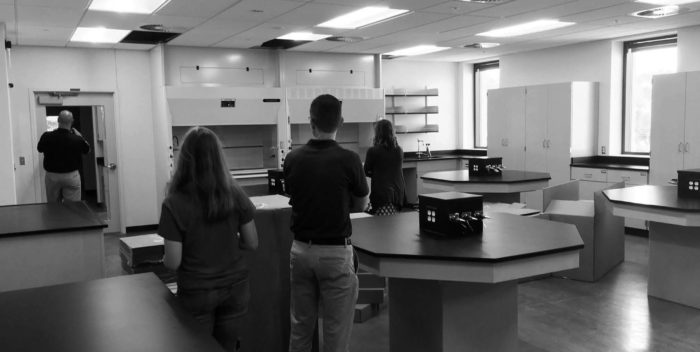Dunklau Center opens for fall semester
By Kaytlyn Kindschy
The science wing of the Dunklau Center for Science, Math and Business opened in August, just in time for the new academic year. The second and final phase of the opening will open the business, math and computer science wing in December 2019.
The new addition to campus has been under construction since April 2018.This 86,000 square foot project will be home to programs such as: biology, chemistry, physics, environmental science, agricultural science, computer science, mathematics and business.
The Dunklau Center is equipped with faculty offices, two conference rooms, 11 classrooms, two lecture halls, four biology labs, three chemistry labs, two physics labs, two computer science labs and a greenhouse.
This building also offers five research labs for biology, chemistry and physics to encourage the success of studets in their studies.
“Specifically for science students, the biggest thing the building offers is more space for laboratories,” Associate Professor of Chemistry John Jurchen said. “We have roughly doubled the number of teaching laboratories in the move from old science to Dunklau, and every area of the natural sciences has at least one dedicated research laboratory.”
The Dunklau Center was designed to allow students and professors to work together and among each other in adaptable, flexible and user-friendly spaces.
One of these spaces is the brand-new 1,000 square foot “Co-Lab” that looks out over the quad. This Co-Lab will allow students and professors to have classes, programs and meetings along with large and small group student projects and study.
“It is an exciting addition to campus, and it will enhance the Concordia experience for every student, not just the Science and Business students,” Jurchen said. “We purposely sprinkled study and meeting spaces for students throughout the building, so students will not need to sit in the hallway or go to the library if they want to talk or study between classes, as they used to have to do in the old science building.”














